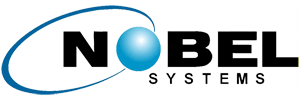The Internet of Things (IoT) is changing the way we do business, with a tremendous impact on the world around us. The growth of IoT technologies and business models is transforming cities in various ways, from improving public safety to creating smarter cities.
A recent market research report forecasts an explosive CAGR of 25.69% for IoT technology, with global revenues projected to reach more than $1 trillion by 2030. For perspective, in 2020, global IoT revenues were estimated at $389 billion.
Smart city planners want to make their cities more livable, efficient, and sustainable. A smart city with IoT can help achieve this goal by providing real-time data about the state of urban infrastructure.
City managers can use this information to manage energy consumption, reduce traffic congestion, ensure better sanitation services, and more. Check out these five examples of how cities are using IoT for infrastructure management:
5 Ways IoT is Used in Smart Cities
Traffic Management
Smart cities use IoT to predict traffic movement, adjust signal timing to ensure smooth traffic flows, and help decrease commute time. By doing this, cities are making their roads safer, reducing pollution levels, and improving the overall quality of life for the residents.
Smart Parking
Smart parking system uses IoT technology to automate parking your vehicle. The system contains sensors that help identify vacant slots in the parking areas and easily find a free parking space. Using this system saves drivers time, as they don’t waste their time looking for a spot. It also saves time and fuel costs as drivers don’t have to drive around for hours to find a space for their vehicle. IoT networks such as LoraWan and narrowband IoT help scale such parking projects. It also helps cities and parking space owners streamline the payment process and increase parking revenue.

Improved Public Safety Using Predictive Maintenance
Predictive analytics enables city officials to proactively manage the city’s infrastructure and resources, maximizing efficiency and minimizing costs. For example, cities have cut emergency response times through predictive monitoring of roadways and bridges.
Maintenance departments also similarly benefit from this technology. Proactive data analysis and machine learning technology can help implement real-time predictive maintenance.
Lighting Management
Street lights can be connected with sensors to turn on and off depending on where there’s an activity or when it’s daylight in the city to save energy. Lights also helped reduce crime in some areas by increasing the visibility of dark corners.
Water Quality Monitoring
Water monitoring sensors measure water quality, so if there is any contamination, it can be quickly detected, and steps are taken to deal with it. Also, with IoT, cities can monitor vital water sensors in real-time, identifying problems before they become major issues and reducing water loss. Parameters such as total dissolved solvents (TDS) and turbidity are often monitored using IoT-based sensors.

Conclusion
The Internet of Things (IoT) is a revolutionary technological advancement that can dramatically change the way we live, work, and play. For example, a smart city with IoT can more efficiently manage infrastructure and maintenance, thereby reducing operating costs and improving the lives of its citizens.
As cities worldwide continue to incorporate IoT technology, the more that cities, their citizens, and the world can benefit from its use.
